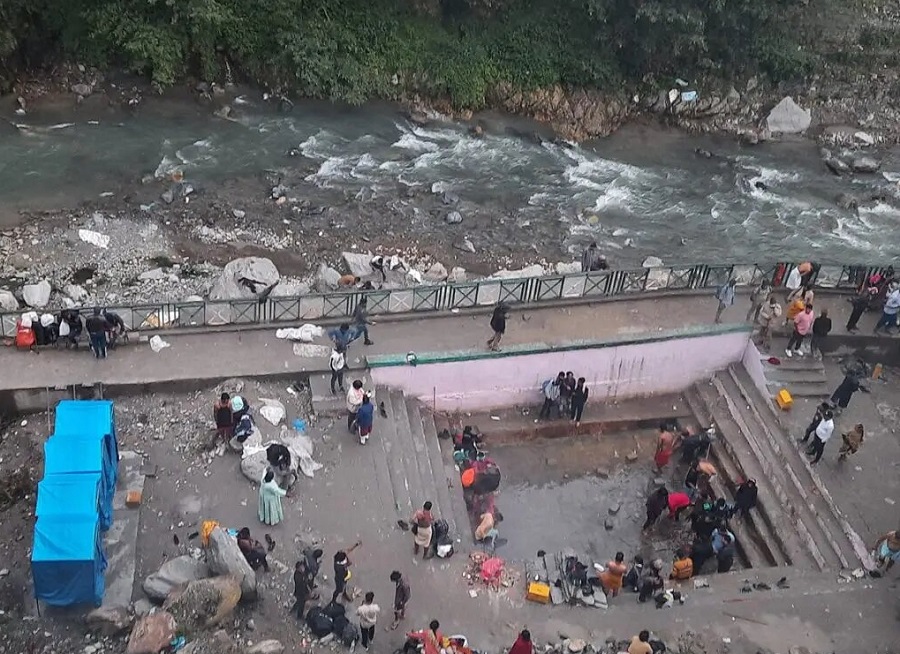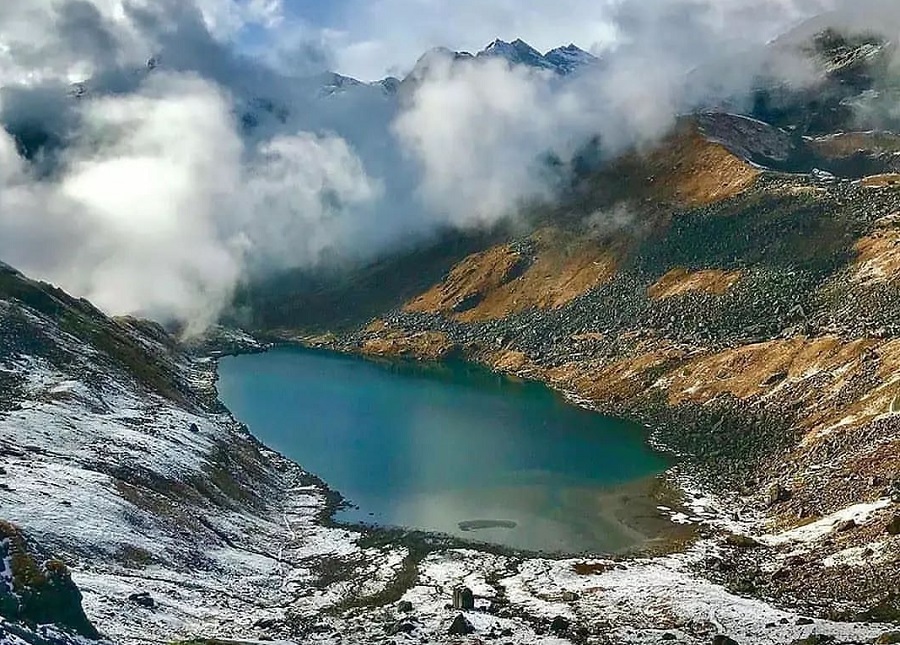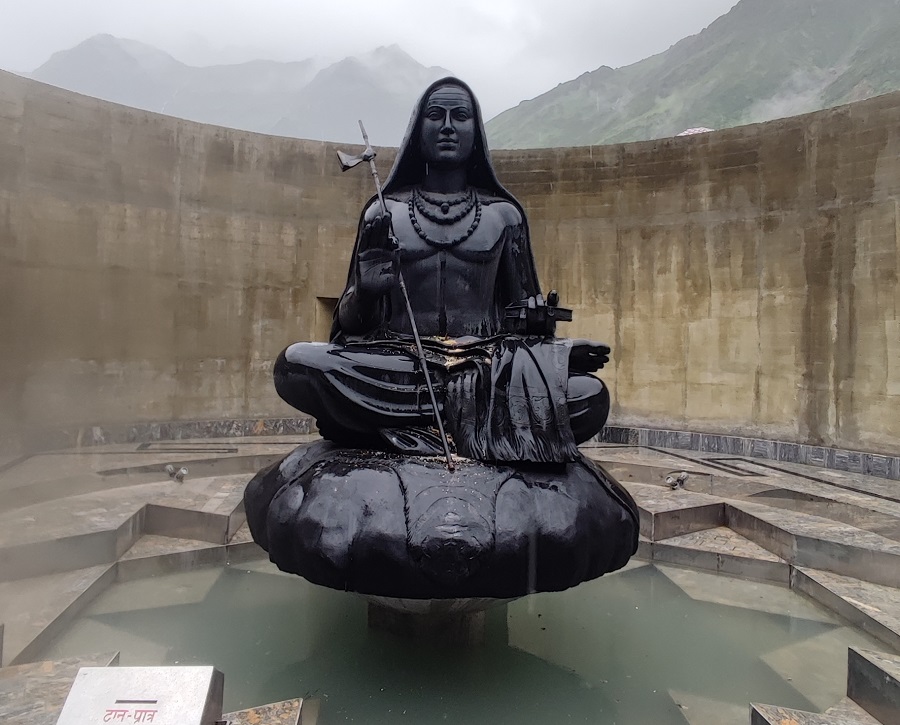Kedarnath, located in the Rudraprayag district of Uttarakhand's Garhwal region, is one of Lord Shiva's most sacred pilgrimages. Kedarnath is the most important of the Panch Kedar and one of Uttarakhand's Char Dhams. Kedarnath is one of Lord Shiva's twelve Jyotirlingas and is located at an elevation of 3586 metres in the lap of the majestic mountain peaks and near the head of the Mandakini River. Lord Shiva, the destroyer and protector, is also known as Kedar, which means powerful in Sanskrit. The beautiful ambiance surrounding the temple appears to be quite peace on heaven, making it a beautiful place to meditate. The main draw here is the Shiva Temple, a popular Hindu shrine and pilgrimage that draws devotees from all over the world. Natural beauty and religious zeal help to broaden the scope of travel and tourism in this region.
As legend Says - History
Kedarnath literally means Lord of field, and many strong legends are associated with the temple. With faith in Lord Shiva people believe in all the legends and with each legend the spiritual clarification of the devotees become more strong and deep. According to legend, Nara and Narayana, two incarnations of Vishnu, performed severe penance in front of an earthen Shivalingam in Badrikashram, Bharat Khand. Lord Shiva appeared in front of them, pleased with their devotion, and invited them to request a boon. Nar and Narayan requested that Shiva take up permanent residence as a Jyotirlingam at Kedarnath, thereby relieving the suffering of all those who worship Shiva. Lord Shiva agreed, and it is said that Lord Shiva's presence can still be felt in Kedarnath's air today.
The second legend says that during the time when the five Pandavas brothers were asked to seek Shiva's forgiveness for killing their cousins, the location was created. Lord Shiva, unwilling to give the Pandavas Darshans, sent himself to Kashi in the form of a bull to live incognito in Guptkashi, where he was eventually discovered by the Pandavas and finally forgave them and ushered with his blessings. Another popular legend associated with Kedar Temple is that Goddess Parvati worshipped Kedareshwar in order to become Ardhanareeswarar, the union of Shiva and Parvati.
Best Time to Visit - Weather Update
Kedarnath is one of India's four great pilgrimages, located in the hills of Uttarakhand. Because it is freezing cold most of the year, May to June and September to October are the best months to visit Kedarnath. Avoid travelling during the winter months (November to April), when temperatures drop below freezing and heavy rain falls. Summer (May-June) has a pleasant climate that is ideal for Kedarnath visits. From July to August, monsoons can cause severe flooding and landslides.
Summer (May - June)
The best months to visit Kedarnath are May to June, when the average temperature ranges from 15 to 30° C. During this time of year, the majority of visitors are pilgrims, while others explore the temples and other trekking routes in and around Kedarnath. Furthermore, the temple at Kedarnath is only open from May to October, which is the celebration time of Akshaya Tritiya to Diwali.
Requirements for the Trip
Bring a day pack, trekking shoes/comfortable walking shoes, trekking pants, a windproof jacket, light weight woollen clothing, a sun cap, sunglasses, sunscreen lotion, lip balm, a torch/flashlight with extra batteries, a walking stick, and personal toiletries with you. A water bottle is a must-have. Keep dry fruits, energy bars, and energy drinks like electoral (ORS)/Gatorade on hand as well.
Monsoon (July - August)
The rainy season begins in July and lasts until mid-September. The best time to visit Kedarnath is now until the winter season begins. With an average temperature of 12°C, however, the monsoons can bring excessive rainfall on occasion, making it less than ideal for a visit. It is known to be flood-prone, as evidenced by the 2013 floods, which forced the temple to close during this season.
Requirements for the Trip
Carry a raincoat/poncho, waterproof trekking/hiking shoes, trekking pants, a windproof/water resistant jacket, thick fleece, woollen clothing, waterproof gloves, thick wollen socks, a walking stick, raincoat/poncho, torch/flashlight with extra batteries, and personal toiletries in your day pack. Bring a water bottle, some dry fruits to snack on, and energy drinks to avoid dehydration.
Winter (November - April)
Between November and March, Kedarnath is virtually closed to tourists. Temperatures plummet to sub-zero levels, and heavy rains accompany them, causing most visitors to stay away. Because all of the area's main attractions are closed to tourists and visitors, the area literally becomes a white ghost town. Do not travel during this time period because the roads are bad, the amenities are unavailable, and there is nothing to do.
Explore the Best Tourist Spots near Badrinath
There are numerous mythological sites to visit near Kedarnath Temple, particularly those from the Mahabharata epic. These locations offer the best views while also allowing pilgrims to experience spiritual bliss.
Gandhi Sarovar
The surrounding Himalayan peaks can be seen from the crystal-clear Chorabari Tal. The lake, also known as the Gandhi Sarovar or Gandhi Tal, is about 3 kilometres from the Kedarnath temple. A short walk from the temple takes you to the lake, which was formerly known as Kanti Sarovar. In 1948, some of Mahatma Gandhi's ashes were scattered in the lake, which was renamed Gandhi Sarovar. According to legend, Lord Shiva taught the Saptrishis the art of yoga at Chorabari Lake. The Chorabari Bamak Glacier feeds the lake, which is located at an elevation of 3,900 metres above sea level. Also, pay a visit to the nearby Bhairava Temple. On the way, the breathtaking Madhu Ganga Waterfalls provide a peaceful rest stop.
Sonprayag
Sonprayag is a small hamlet in Uttarakhand's Rudraprayag district. It has an elevation of 1829 metres. On the way to Kedarnath Dham, pilgrims stop at Sonprayag. Sonprayag sits at the confluence of two sacred rivers, the Basuki and the Mandakini. Bathing in the river is widely believed to wash away one's sins. Sonprayag is a popular tourist destination due to its proximity to snowcapped peaks. This tranquil setting is enhanced by snow-capped peaks and flowing rivers. Triyuginarayan, said to be the marriage site of Lord Shiva and Parvati, is about 10 kilometres from Sonprayag.
Gaurikund
The Kedarnath Yatra begins at the Gauri Kund, located at a height of 6500 feet in the Garhwal Himalayas, where the road ends and the 16-kilometer trek to the Kedarnath Temple begins. The hot water springs at Gauri Kund are revered as one of the holiest Hindu sites. The most breathtaking view is from the Gauri Kund, which is located on the Mandakini River's bank. According to legend, the Gauri Kund is also associated with Lord Ganesh and how he got his elephant head.
While taking a bath, Goddess Parvati fashioned Lord Ganesh from her soap lather and placed Lord Ganesh as a guard at the Kund's entrance, warning him not to let anyone enter while she was meditating. When Lord Ganesh refused to enter of Lord Shiva himself unknowing to the fact he is her husband, infuriated Shiva and he chopped off Ganesh's head. After Parvati insisted that the child be brought back to life, Lord Shiva took the head of a wandering elephant and placed it on Ganesha's body. The Gauri Kund, also known as Parvati Sarovar, is a sight to behold, surrounded by lush green forest, flowing Ganga, and the Gauri temple.
Vasuki Tal
Vasuki Tal, also known as Vasuki Lake, is a beautiful lake located in the beautiful hills of Kedarnath, Uttarakhand, at an elevation of 4135 metres. It is also popular among Uttarakhand Treks. Vasuki Tal is surrounded by high mountains and provides a breathtaking view of several Himalayan peaks. In ancient times, Lord Vishnu is said to have bathed in this lake. The sight of Vasuki Tal's crystal clear water flowing through the lake revealing the rock stacks within is breathtaking. This lovely lake provides a beautiful view of the nearby Chaukhamba peaks.
Surrounded by a variety of colourful flowers, including the Brahma Kamal gives a new enhancement to the Tal. During the winter, the lake is completely frozen. It is quite large, and the trek is difficult and the trek begins about 8 kilometres from Kedarnath. The ascent from Kedarnath to Vasuki Tal is gradual along a narrow path. To reach the lake, travellers must first traverse the Chaturangi and Vasuki glaciers. These glaciers are riddled with ravines, which require a high level of fitness to cross.
Adi Shankaracharya Samadhi
The grave of Adi Guru Shankaracharya, the saint credited with founding India's four sacred dhams, which are important Hindu pilgrimages, is located slightly behind the Kedarnath Temple. At the age of 32, the famous Hindu philosopher attained enlightenment. According to legend, Shakaracharya became one with the land. Thousands of pilgrims visit the Shankaracharya Samadhi, one of the most popular tourist attractions in Kedarnath. Shankaracharya is said to have visited Kedarnath in the eighth century and built one of his four mathas there. The disciples of Shankaracharya visit a hot water spring that is thought to have been created by him to provide relief from the area's extreme climatic conditions.
Triyuginarayan Temple
For anyone looking for a revered location, the Triyuginarayan village in Uttarakhand's Rudraprayag district is an ideal wedding destination. It is well-known for its namesake temple, which is dedicated to Lord Vishnu; legend has it that Lord Shiva and Goddess Parvati married at the temple. This is how the name Triyuginarayan came to be, with Tri referring to three, Yugi referring to epochs, and Narayan referring to Lord Vishnu. An eternal fire, or dhooni, burns continuously at the shrine. According to legend, the fire was lit on the occasion of Shiva and Parvati's marriage. Rudra Kund is for bathing, Brahma Kund is for sipping water, Vishnu Kund is for cleansing, and Saraswati Kund is for offering libations.
Shri Bhairavnath Temple
Bhairav temple, also known as Bhairon Baba Mandir, is a Hindu temple in Uttarakhand, India. In this location, Lord Bhairav is worshipped. This temple is located on the top of a hill about 500 metres from Kedarnath and can be reached on foot. It is believed that unless a devotee visits Bhukund Baba, his or her Darshan of Kedarnath will be incomplete. The temple is dedicated to Lord Shiva's fierce manifestation, Bhairav, who is associated with destruction and devastation. This temple is located in the beautiful Himalayas of Uttarakhand, south of Kedarnath. Lord Bhairav is worshipped at this temple of Bhairav, and there is no roof over him, implying that Bhairav is seated outside in the open.
The temple's distinguishing feature is that Bhukund Bhairav is worshipped before the doors of the Kedarnath temple open, and Lord Kedarnath is worshipped only after. According to legend, Bhukund was the first Rawal of Baba Kedarnath. Bhukund Bhairav is also known as the Kshetrapal of Kedarnath. Bhukund Bhairav is an incarnation of Lord Shiva.
Essential Tips While Planning the Kedarnath Trip
- Because the weather in Kedarnath is cold all year, devotees must bring warm clothing with them.
- To avoid any chaotic situations, one should take basic sickness medications, including high altitude sickness.
- Make all reservations well in advance of the temple's opening to devotees.
- To stay safe during the rainy season, carry an umbrella with you.
- For a more comfortable trek to Kedarnath from Gaurikund, wear flat shoes or sneakers.
Route Map
The entire Kedarnath trek is 16 kilometres long, beginning and ending in Gaurikund. Following the 2013 flood disaster, the 14-kilometer trek was expanded to a 16-kilometer trek. This is a comprehensive guide to the new Kedarnath trek route.
From Sonprayag, take a shared taxi or a private hired cab to Gaurikund, then trek 4 kilometres through the Rambara Bridge to Jungle Chatti, 3 kilometres to Bheembali, 4 kilometres to Linchauli, 4 kilometres to Kedarnath Base Camp, and 1 kilometres to Kedarnath Temple.
How to Reach
By Air - Dehradun's Jolly Grant Airport is the closest to Kedarnath (250 km). You can fly to Jolly Grant from Delhi or any other major Indian city, and we will arrange private transportation to the temple.
Kedarnath Yatra by Helicopter is another option for getting to the temple. It is best to book as a group and fly over the beautiful valleys and mountains to reach the abode.
By Train - The nearest railheads to Dehradun are Rishikesh (230 km) and Kotdwar (121 km), from which trains to the city depart.
By Road - All major Garhwal hill towns, including Rishikesh, Kotdwar, Dehradun, Haridwar, Badrinath, and Gangotri, are accessible by road to Kedarnath. We would provide you with vehicles with all India tourist permits for local and intercity drives.
Opening and Closing dates of the Kedarnath temple 2023
The auspicious day of Akshaya Tritiya is announced every year on Maha Shivaratri, determining when the Kedarnath Temple opens. After calculating the Hindu Panchang, the priests of the Omkareshwar Temple in Ukhimath choose the day on which the Kedarnath shrine will open. This year Opening date - 6:20 a.m. on April 25, 2023 (Morning) and Closing date - 14 Nov 2023, a day after Bhai Dooj in late November, following the Diwali celebrations.













